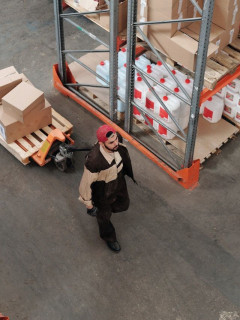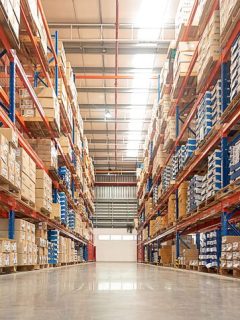Shipping dangerous goods – which packaging to choose for transporting dangerous goods?
Dangerous goods are those that do not provide the safety that can be expected given normal wear and tear. Consequently, such products must meet specific shipping and packaging conditions. Special packaging is used to transport them.
It appears that such goods are not shipped occasionally, but quite frequently. Therefore, entrepreneurs who are involved in the production or distribution of such goods should equip their warehouse with appropriate packaging for the transport of dangerous goods.
Dangerous goods – definition
According to Articles 4491 – 44911 of the Civil Code, these are items that do not provide the safety that can be expected of them taking into account normal wear and tear. Whether a product is dangerous is determined by the circumstances at the time it was introduced into commerce. A product is a movable thing, also connected to another thing, as well as an animal and electricity.
The manufacturer, the manufacturer of the component part, the nominal manufacturer, the importer and the seller of the product (if it is not known who the manufacturer, nominal manufacturer or importer is) are liable for damage caused by a dangerous product.
According to courier companies, a hazardous product is any item that requires special handling due to, for example, the chemical nature of the goods and one that may cause injury to the courier or recipient or damage to other packages in transit. Such products include: lithium batteries, paints, varnishes, aerosols and even perfumes! Batteries can overheat and ignite, paints, varnishes can catch fire, aerosols can explode and alcohol, which is an ingredient in perfume, can catch fire. Other dangerous goods include: fireworks, pesticides, insecticides, bleach, deodorisers, etc.
Shipment of dangerous goods – what is it?
It is essential to use special packaging for shipping or transporting hazardous products. RAJA wholesale offers a wide range in this respect: https://www.rajapack.pl/kartony-pudelka-opakowania-kartonowe/kartony-na-produkty-niebezpieczne_C1192.html.
The shipment of dangerous goods involves additional obligations and charges for the shipper. The shipper must declare the fact that it is a dangerous product, pack it correctly and label it. In addition, documentation required in the country of delivery must be included. All these elements are the responsibility of the shipper. The carriage of such goods is subject to regulations under: IATA – for air transport in countries where ICAO rules apply or ADR – for road transport in countries applying the rules of the ADR Convention and in Western Europe in accordance with EU directives.
Before deciding which courier company to entrust the transport to, it is worth familiarising yourself with the applicable regulations, as each carrier has different rules and rigours.
Packaging for the transport of dangerous goods
It is imperative to use special packaging for the shipment of hazardous products. The RAJA offers cartons for hazardous goods with the ONU label, in as many as 9 variants. They are very sturdy packaging, as they are made of five-layer cardboard, while DAP55 and DAP70 (the largest size of cardboard boxes) are made of seven-layer cardboard. They are very practical – equipped with a protective bag made of PE film with a thickness of 50 microns. On the outside, such boxes are covered with kraft paper for the best possible protection of the load. They are ordered folded, so they take up less space in the storage area. They are designed to be recycled after use. They are sold in packs of 5.
Groups of dangerous goods packaging
There are 3 groups of packaging for hazardous products. Those belonging to Group I must pass a drop test from 1.8 m for highly dangerous goods (poisonous and infectious substances). Those belonging to group II must pass a drop test from 1.2 m for moderately dangerous goods (explosives and batteries). And those in group III include those that must pass a 0.8m drop test for less dangerous goods (flammable liquids). Group I packaging can serve as packaging for groups II and III, but without being able to exceed the maximum weight.
Transport of dangerous goods
In situations where dangerous goods are transported in bulk or in tanks or in pieces, if the quantity exceeds the value stated in the government declaration, the vehicle must be specially marked with UN plates. This does not apply to individual consignments carried by couriers.














